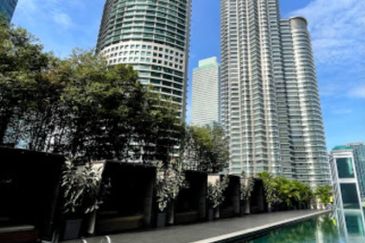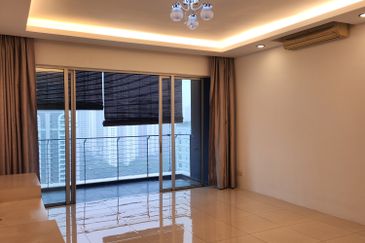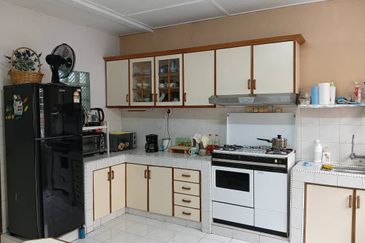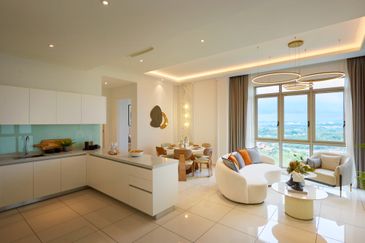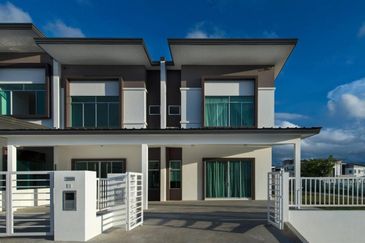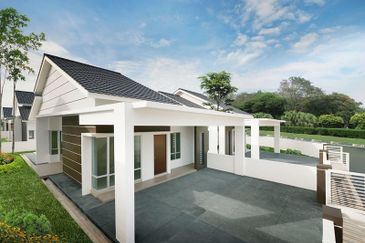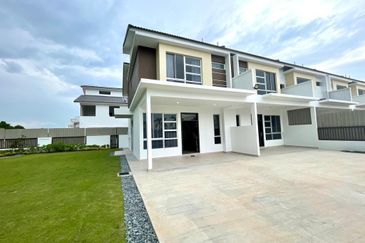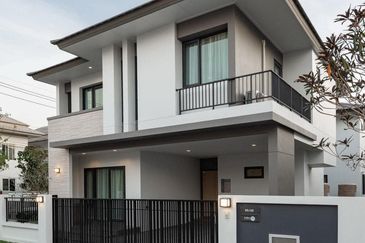SEVERAL real estate markets across the globe grew this year, albeit at a slower pace. Consultants in markets such as the UK, Australia, New Zealand and China reported a positive year while those in Asian markets generally highlighted a slowdown and challenges due to factors such as weakening market sentiment, global economic slowdown and cooling measures imposed by the governments.
The performance of the different segments — residential, commercial, retail, hospitality and industrial — across all the markets was mixed. The office segment in Hong Kong and China, for example, was vibrant due to foreign investment while in the UK, the commercial segment was strong.
On the home front, the weaker ringgit did not spur the interest of foreign investors in Malaysian properties due to the unstable political situation here and wait-and-see attitude of the government on cooling measures imposed on foreign buyers. Consultants have mixed views on the outlook for the property market in their respective countries. — By Racheal Lee
INDONESIA
Willson Kalip, country head of Knight Frank Indonesia
 The Indonesian property market has been facing a significant slowdown and challenges in terms of demand and price growth as well as buyer sentiment due to the local and global economic slowdown (decreasing commodity prices and demand) and the depreciation of the rupiah.
The Indonesian property market has been facing a significant slowdown and challenges in terms of demand and price growth as well as buyer sentiment due to the local and global economic slowdown (decreasing commodity prices and demand) and the depreciation of the rupiah.
Asking prices for residential and office space remained high with steady growth while developers are offering more gimmicks or incentives, such as a longer down payment scheme, easy developers’ financing and subsidised loan interest. Asking office rents in the CBD remained steady but transacted prices showed a decreasing trend. Asking serviced apartment rents remained steady.
Foreign investors are still coming in and they are mostly from Japan, Singapore, Hong Kong, Malaysia, South Korea and China. They are looking at major cities, such as Greater Jakarta, Bandung, Surabaya and Bali. Jakarta CBD tends to be more stable due to the capital city location and its population pointing to the highest level of demand.
Residential developments continue to see genuine demand. Serviced apartments or student housing will become key trends as they are supporting the industrial estates and proper student housing is lacking.
Popular locations are mainly in major cities such as Greater Jakarta (Jabodetabek), Karawang, Bandung, Surabaya and Bali. However, investors should also look at the second tier cities as long as there are major infrastructure developments planned.
Much of the expectations of property price gains are contingent on infrastructure projects and economic reforms coming to fruition. Stable politics, enticing demographics and natural resource profile help attract foreign investors to boost the property market while local developers are in standstill mode. Sharing the risks with foreign parties would be the trend now in this short-term market cooling/reconciliation.
Long-term view must be taken by foreign developers as we are still confident Indonesia will thrive. Many opportunities still do exist while challenges, such as bureaucratic red tape and corruption, are gradually being improved. Indonesia’s property market will likely be in a reconciliation condition in 2016. We are hoping that by late 2016, it will start to rebound slowly.
In short, a positive long-term view is still expected while this short-term turbulence will be endured confidently by local property players. The right timing (sentiment and confidence level of buyers) can still bring in wealth, subject, of course, to the economic conditions and buyer sentiments.
THE UK
Mat Oakley, head of Savills European Commercial Research
 The commercial property market in the UK continued to perform strongly this year, delivering an average annual total return of 15.3% for the year to end-September. The major change this year was improving strength in the UK regions with the growth story no longer dominated by London. The components of the total return have also started to change with rental growth recovering and capital value growth starting to slow.
The commercial property market in the UK continued to perform strongly this year, delivering an average annual total return of 15.3% for the year to end-September. The major change this year was improving strength in the UK regions with the growth story no longer dominated by London. The components of the total return have also started to change with rental growth recovering and capital value growth starting to slow.
Rental and capital value growth remained the strongest in the London office and retail markets but the industrial and logistics market saw a strong rebound this year, driven by improving tenant demand and supply shortage. We also saw a recovery in the prime rents being achieved in the major regional city office markets, such as Manchester and Birmingham.
Non-domestic investor demand remained strong for all types of assets in the UK. More than 60% of acquisitions in central London this year were by non-domestic buyers and we expect to see a record level of non-domestic activity in the markets outside London. The most active non-domestic buyers of UK commercial property this year were from the US, Middle East, China and Singapore. Popular sectors remained the London office and retail, and regional portfolios.
Malaysian investors were not particularly active in the UK last year and this year, although 2015 looks likely to see a small year-on-year increase in activity. The majority of the assets purchased by Malaysian investors in the UK this year were London office or retail properties.
Our top picks for 2016 are generally around rental growth. For retail, bulky goods retail warehousing is great for click and collect as well as returns while low rents are good for retailer margins. Central London retail will also continue to be the best performing element of the retail market with average annual rental growth of around 3% over the next five years.
Growth in prime retail rents across the West End continues to pick up pace — currently up 18.7% year on year. This continues to be driven by strong occupational demand and availability constraints. For example, 32 new international brands have opened their first store in London so far.
Offices in the London future core and Zones 2 to 6 look like the best development and refurbishment opportunities. Refurbishment in the Tier 1 cities looks interesting due to tenant affordability as northshoring soaks up the best new-build space and indigenous businesses look for new locations.
For the industrial and warehousing sector, the winner is from e-commerce, especially large hubs and edge-of-city industrial. Other alternatives are leisure, student, senior and healthcare, which offer long leases and growth in demand. Nearly 30% of UK’s investment volume this year was in alternatives, from 10% five years ago.
Continued economic growth and relatively low levels of development activity keep vacancy rates low in many markets. This will be a spur for rental growth, particularly in Tier 1 locations. We expect overall total return to be lower in 2016, which means that investors need to be more focused to find the best rental growth opportunities.
CHINA
Carlby Xie, head of China research at Colliers International
 China continues to attract a growing number of foreign investors due to its stable political environment, slower yet more sustainable economic growth and the long-term prospects for the property market. Foreign property investors in China are mostly from Hong Kong, Singapore, the US, Taiwan, South Korea, Japan, the UK, the Netherlands and Australia.
China continues to attract a growing number of foreign investors due to its stable political environment, slower yet more sustainable economic growth and the long-term prospects for the property market. Foreign property investors in China are mostly from Hong Kong, Singapore, the US, Taiwan, South Korea, Japan, the UK, the Netherlands and Australia.
The office and retail sectors in China’s property market attract the majority of foreign investment, accounting for 53% and 43% in 1H2015 respectively. Shanghai is the most attractive foreign investment destination in China and volume has been ranked top for many years, followed by Beijing, Guangzhou and Shenzhen. Shanghai is the economic and financial centre of China. In addition, a large amount of tradable assets and flexible deal structures in the Shanghai market provide foreign investors more opportunities than the other cities in the country.
There are plenty of investment opportunities in China’s property market with the office and industrial sectors being the most active and secure.
The main catalysts include stable political conditions, slower yet more sustainable economic growth, economic tertiarisation, population, evolved shopping behaviour and its impact on e-commerce, and logistics property market, among others. Overall, the outlook for China’s property market is cautiously optimistic for the long term despite some short-term challenges in the commercial sector due to a lack of equilibrium in supply and demand, primarily in the lower tier cities.

In the office sector, except for Beijing and Shanghai, where the two office markets are expected to see moderate rental growth in 2016, most of the cities in China are forecast to see a rental decrease due to a large amount of new completions and subdued office demand. Office demand profile by city in China should remain largely unchanged.
In the retail sector, a divergent performance of prime and non-prime catchments will continue. Many more landlords are expected to be more tolerant in accepting lower positioning of their projects and to become less picky in brand mix as a result of softening demand from both international and domestic retailers. An influx of new supply will be completed in second tier cities’ non-prime areas, which will result in more leasing competition, higher vacancy rates and declining rents.
In the logistics sector, leasing and investment demand should continue to be strong, catalysed by sustainable growth in the e-commerce and third-party logistics providers.
In the residential sector, the performance of first-tier and non-first-tier cities will continue into 2016 — price growth for the first tier cities is expected to be positive while that for non-first-tier cities will continue to be constrained by weakened investment demand and oversupply. Upgraded demand and asset portfolio enhancement will incubate stronger growth momentum in the high-end residential sector.
There is no obvious sign that the depreciation of the ringgit has spurred the Chinese to invest in Malaysian property. The relatively unstable political conditions of the country and the Sino-Malaysian bilateral relationship make Chinese investors doubt whether it will be a worthy investment. To put it simply, from the Chinese investor perspective, it is too risky to invest in Malaysia at the present time compared with many other international markets.
SINGAPORE
Donald Han, managing director at Chestertons Singapore
 For the first time, all segments of the market turned south. Office rents that had risen in the past two years came under pressure and sank 4% q-o-q in 2Q2015. This came on the back of a potential 4.8 million sq ft office glut in 2016, the bulk consisting of Grade A space located in the prime financial district.
For the first time, all segments of the market turned south. Office rents that had risen in the past two years came under pressure and sank 4% q-o-q in 2Q2015. This came on the back of a potential 4.8 million sq ft office glut in 2016, the bulk consisting of Grade A space located in the prime financial district.
Slower economic growth both in Singapore and in the region is expected to hinder corporate expansion, with landlords now adopting a tenant retention strategy. We expect more rent-free periods being offered by landlords to entice tenants. The residential market continued its downward trend and we expect prices to soften 6% with yearly new home sales volume expected to match last year’s 7,500 units. The industrial market will see continued overcapacity of nearly 40 million sq ft coming onstream in the next three years, which will take some three years to fully absorb the space. The retail market is more resilient in the suburbs compared with the city centre/Orchard road.
Key challenges remained on three fronts: slower tourist arrivals with a relatively stronger Singapore dollar, higher labour and operation costs as well as competition from e-commerce that is putting a huge dent in traditional bricks-and-mortar retail spending.
Foreign institutional and sovereign wealth funds are increasing their exposure to Singapore, preferring Class A commercial assets. While yields are fairly low at less than 4% per annum, Singapore is deemed a safe haven, helping to protect wealth, especially with the strong Singapore dollar. Chinese and Hong Kong developers have increased their residential development activity here, diversifying and regionalising their development base outside their core mainland focus. More Middle Eastern and some shariah-compliant funds are beginning to nibble at prime industrial assets, hoping to capitalise on higher yields in excess of 7% per annum.
Generally, investors are sitting on the sidelines, waiting for greater clarity on the macro front if they should invest in Malaysia. When the ringgit starts to stabilise, we think investors will start relooking at strategic opportunities, near infrastructure nodes in the main first-tier cities like Kuala Lumpur and Penang.
Malaysian buying activity has dropped due to a double whammy of a weak ringgit and additional buyer’s stamp duty imposed on permanent residents and foreigners. Many are leasing or waiting on the sidelines for the government to roll back some of the property cooling measures.
The market is keeping an eye on the potential relaxation of government cooling measures introduced in 2012. There is a sense that if property prices, especially those of the residential sector, come off 15%, the government may start refining some measures. Another possibility could be if the Singapore economy slips into a technical recession, defined as two quarters of successive contractions, which it nearly did in 3Q2015. If that happens, we expect some form of stimulus measures, which may include a potential scaling back of the property cooling measures.
AUSTRALIA
Dominic Brown, head of Southeast Asia, Australia and New Zealand Research at Cushman & Wakefield
 On the whole, 2015 was a positive year for the Australian property market. However, there was spatial variation around the country as well as diverging trends between sectors. The transaction market for both the residential and non-residential sectors remained buoyant in 2015, although it saw a slightly lower volume than in 2014. Abundant capital circling the market led to increased competition for quality assets, resulting in further yield compression.
On the whole, 2015 was a positive year for the Australian property market. However, there was spatial variation around the country as well as diverging trends between sectors. The transaction market for both the residential and non-residential sectors remained buoyant in 2015, although it saw a slightly lower volume than in 2014. Abundant capital circling the market led to increased competition for quality assets, resulting in further yield compression.
Price growth was predominantly observed in the Sydney and Melbourne markets across most sectors while prices in Brisbane and Perth remained comparatively flat. For example, in the CBD prime office markets of these cities, average yields in Sydney and Melbourne tightened up to 100 basis points over the year while there was little appreciable change in Brisbane and Perth.
Similarly, the greatest amount of yield compression in the industrial sector was seen in Sydney and Melbourne. The geographical divide was less evident in the retail sector, being more driven by centre type and quality of income. While investors were still pricing risk accordingly, we saw yields compress for quality retail assets.
Price growth in the residential sector was largely constrained to Sydney and the detached housing market in Melbourne. In Sydney, detached houses saw a price increase of 21% in the year to June while units saw a 14% increase. In comparison, unit prices in Melbourne and Brisbane rose 3% or less.
Typically, offshore investors focus on Australia’s largest markets — Sydney and Melbourne. Those investors who have a greater familiarity with the country are willing to invest in Brisbane. In the non-residential market, most investors focus on the office sector, although again, many seek to diversify into retail and/or industrial as their knowledge of the various markets expands. Interestingly, there was a lot of offshore investment activity in the hotel sector in 2015 with the vast majority of transactions over A$100 million undertaken by foreign entities.
Opportunities will continue to exist across most asset classes in 2016. However, with further repricing forecast for the year ahead, investors would be well placed to act quickly, especially given the level of competition in the market. Thus, investors should carefully consider their required returns and hurdle rates. Competition for prime assets will continue to endure, although investors will also seek opportunities up the risk curve in an effort to maximise returns.

The outlook for Australian property remains biased towards the positive. The amount of existing and new capital circling Australia will continue to fuel the investment market, aided by the attractive relative value that commercial property still offers. Lack of available assets is likely to keep competition elevated and lead to further repricing and yield tightening. Improving office tenant demand in Sydney and Melbourne will drive rental growth and if recent improvements in retail expenditure can be sustained, it bodes well for the retail sector.
The amount of residential construction activity, together with the recent strong price increases in some markets, is expected to result in slower house price growth. However, with monetary policy remaining accommodative, it is likely that the sector will continue to record positive growth, albeit at a lower level.
NEW ZEALAND
Brent McGregor, senior managing director at CBRE New Zealand
 In 2015, the New Zealand property market experienced further growth in values, albeit at a lower level than in the previous few years, as economic conditions moderated somewhat. After lagging the prime market earlier in the property cycle, price movement for secondary properties was higher as yield spreads narrowed. The exception to this trend was retail, where the entry of global fashion and luxury brands drove up prime retail rents significantly in the Auckland CBD this year.
In 2015, the New Zealand property market experienced further growth in values, albeit at a lower level than in the previous few years, as economic conditions moderated somewhat. After lagging the prime market earlier in the property cycle, price movement for secondary properties was higher as yield spreads narrowed. The exception to this trend was retail, where the entry of global fashion and luxury brands drove up prime retail rents significantly in the Auckland CBD this year.
The very strong levels of investment activity that became evident in 2014 persisted in 2015. The investor base was widespread, from local to Asia-Pacific and European investors. Investor interest has spread from Auckland to Wellington with investors taking advantage of relatively lower pricing in the capital.
New Zealand investors are traditionally focused on the domestic market and have not, to date, shown demand for Malaysian opportunities. Traditionally, Southeast Asian and Malaysian interest in New Zealand property has been in the accommodation, retail and office sectors with sporadic activity. There are opportunities in every sector in 2016 but as the development market responds with a greater supply pipeline potential, oversupply risks could emerge.
Lower interest rates will drive the investment market and high immigration levels will fuel economic growth and demand for housing. With a stronger supply response, 2016 will possibly be a more active year for the economy and the property market than 2015 was.
HONG KONG
Joanne Lee, senior manager of Hong Kong research and advisory at Colliers International
 The stock market volatility in China and Hong Kong, together with the prospect of higher interest rates, weakened market sentiment.
The stock market volatility in China and Hong Kong, together with the prospect of higher interest rates, weakened market sentiment.
Overall sales transaction volume remained low but property prices continued to hover near historic highs this year. Prices are very close to a turning point and will experience a downturn in 2016.
I do not expect a repeat of the crash but a soft landing. Without high levels of leverage and oversupply, construction costs remaining high together with abundant interbank liquidity, the prospect of a sharp price decline is limited.
Rental performance was positive among all property types in Hong Kong, apart from the retail sector.
Luxury retail sales plunged amid China’s economic slowdown, the mainland’s austerity push and its anti-corruption campaign, which resulted in weaker retail sales overall. This spurred a hefty drop in prime high-street retail rents, which likely decreased 25% in 2015.
Funds are looking more into the office sector. Solid fundamentals, including low vacancy levels, growing demand from Chinese corporations and improving infrastructure connections, have made investors more confident. Office rental growth in key business districts is expected. With availability tightening and rents rising in the Central submarket, cost-sensitive tenants will continue to move out of Central into more fiscally responsible districts. This will trigger another round of relocation.
Office buildings will be an investment opportunity for foreigners next year. But they should be aware of the downside risk of interest rate normalisation. Interest rate up-cycles were never a one-time event when Alan Greenspan served as chairman of the Federal Reserve. Colliers believes interest rates will edge up by an aggregate total of 100 basis points in 2016.
Ample liquidity across the globe, without high levels of leverage and any oversupply in Hong Kong, is a solid economic factor that will fuel the property market.
A general hesitancy among investors to place money in China has led to more interest in Hong Kong, especially from those who see Hong Kong as an international financial market close to home with its mature legal and regulatory systems.
This article first appeared in City & Country, a pullout of The Edge Malaysia Weekly, on Dec 28, 2015. Subscribe here for your personal copy.
TOP PICKS BY EDGEPROP
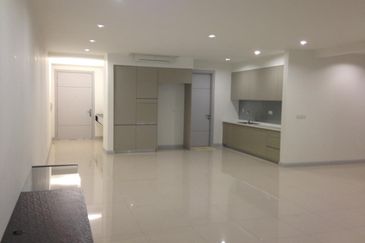
Desa ParkCity (The Westside I)
Desa ParkCity, Kuala Lumpur
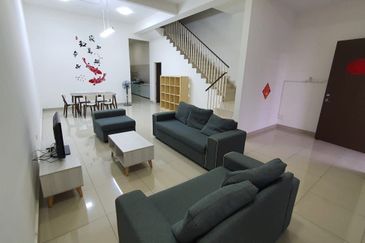
Austin Residence @Taman Mount Austin
Johor Bahru, Johor
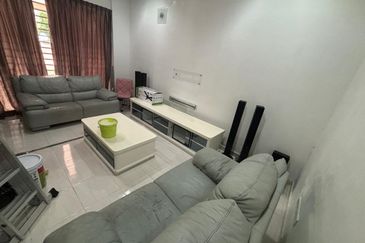
SL 9, Bandar Sungai Long
Bandar Sungai Long, Selangor

Taman Industri Selesa Jaya
Balakong, Selangor


